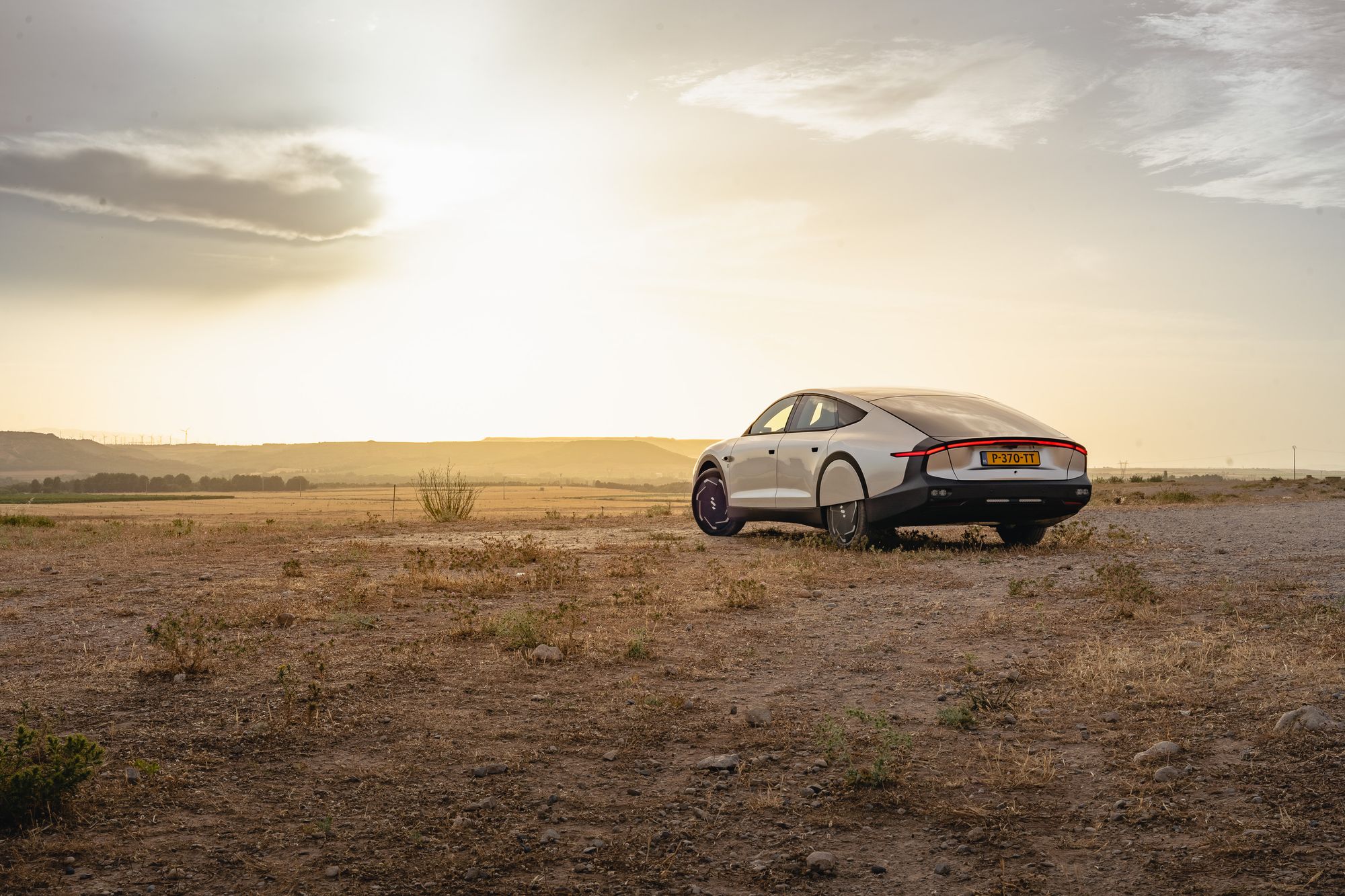That looks… pretty good.
Colour me surprised, those crazy Dutchies have produced a suitably intriguing piece of design. It’s sleek yet aggressive and bears more than a passing resemblance to Mercedes’ EQXX hypermiler.
However, the resemblance is simply incidental given the Lightyear’s tapered silhouette—also boasted by the McLaren Speedtail and Bugatti Chiron Supersport—happens to be one of the most aerodynamically efficient shapes available for a passenger vehicle. Indeed, Lightyear claims its car boasts a drag coefficient of less than 0.19, making it the most aerodynamic family car to date.

What’s with the contrasting bonnet and roof?
They’re not just style statements. They’re solar arrays.
The Lightyear 0 features a whopping five square meters of patented, double-curved solar arrays that allow it to charge up to 70 kilometres (43 miles) of range per day.
Only 70km of range?
No, you muppet. The 70 km figure refers merely to how much energy the Lightyear 0 can recuperate simply by being parked in the sun. That sits on top of its estimated 625 kilometres (388 miles) WLTP range. And, no, you don’t have to park it in the sun for days on end to get to that figure. Plugging the Lightyear 0 into an outlet will yield maximum range in far less time.



What’s most impressive, though, is that thanks to a solar yield of up to 11,000 kilometres a year, drivers using a Lightyear 0 for their daily commute (average = 35 km) can theoretically drive for months before needing to plug into a charger. Live in the Netherlands? You could go for two months before needing to charge. Live in sunny Spain or Portugal? It might be more than half a year before you see your car’s charging port.
Impressive. It must have one heck of a battery.
Surprisingly, the Lightyear 0 boasts a relatively small 60 kWh battery pack. However, what it lacks in size it makes up for in efficiency. The Lightyear 0's four in-wheel motors constitute the most efficient electric drivetrain available today, with an energy use rating of 10.5 kWh per 100 kilometres (at 110km/h).
And, praise be, it’s light. The five-seat Lightyear 0 tips the scales at just 1,575 kilograms—about 500 kg lighter than the similarly sized Tesla Model S.

Is it quicker than a Model S?
No. Not even close.
Lightyear claim the 0 can charge (sorry, bad pun) from 0-100km/h (62mph) in 10 seconds. Top speed is an unimpressive 160km/h (100mph).
So, it’s not a performance vehicle?
Not in the traditional sense, at least.
With only 130 kW (170 bhp) of power available for use, the Lightyear 0 was never going to set the world alight with its straight-line speed. But then again, it wasn’t trying to.
With the 0, Lightyear set about making “the most sustainable car on the planet.” And based on what I’ve seen so far, it seems they’ve accomplished that. It’s not going to give Tesla any sleepless nights and that’s ok. It remains a stunning achievement, nonetheless.

Hold up. How much does this “stunning achievement” cost?
Many dollars. Approximately AUD$371,600 (€250,000), in fact.
But before you roll your eyes and write off the lightyear 0 as another pipedream, know that they’re only making 946 of them and none are coming to Australia.
The 0 is a toe-dip in the EV market for Lightyear which hopes to follow up the 0 with a high-volume mainstream model tipped to cost about AUD$44,600 (€30,000). Production is estimated to start in late 2024/early 2025.
Here’s hoping they make it.







